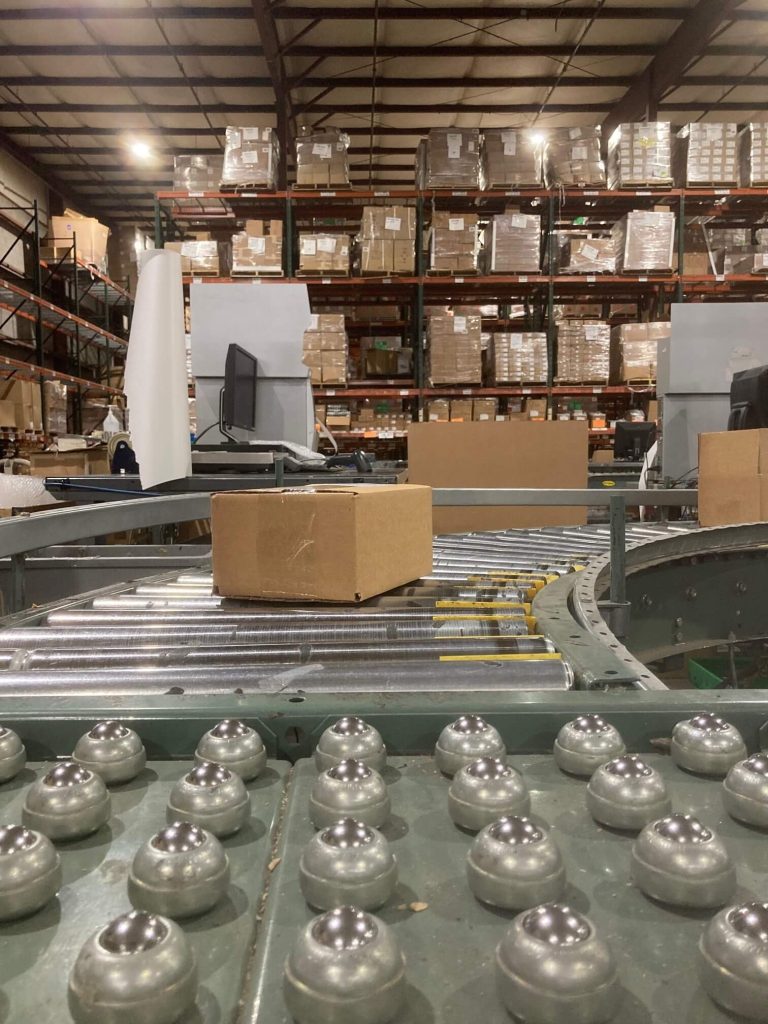Pick and Pack Fulfillment Services
Pick and Pack is a trusted eCommerce solution that improves inventory control and efficiency in...
While inbound shipping costs are considered COGS (Cost of Goods Sold), shipping to the consumer or outbound order shipping cost is not. Shipping costs must be carefully monitored in an effort to maximize ROI.
Many factors play into the Cost of Goods Sold (COGS). Some are much more obvious than others, but as an online retailer, you must diligently monitor each facet of COGS to return a profit while remaining competitive.
Consumers are now extremely skilled at price comparison, and, ultimately, the cost is the overarching deciding factor. In this article, we’ll review ways to reduce fulfillment costs to keep your overall per-product cost down and customer satisfaction up!
Key Takeaways:
Three main categories go into calculating COGS. Let’s explore each one.
Material costs–also referred to as direct material costs or raw material costs–include everything it takes to create a product.Material costs include direct and indirect costs.
Direct costs include the materials required to create a product.
Indirect costs may relate to the cost of transportation to gather and produce materials, handling costs, and the cost of co-packing and other packaging options.
Even if you don’t manufacture or design your own products, you will still need to consider direct and indirect material costs in your COGS.
One often overlooked cost to consider is inventory storage. This includes shelved items awaiting sale or those being incrementally phased into your inventory count. All of this affects your profit.

Once you have your products, additional costs are incurred once a sale is made.
Fulfillment costs for pick-and-pack and shipping materials are part of every sale.
Next, shipping is another potential cost to get your customer’s order out the door. Many retailers eat some or all shipping costs to appeal to customers.
As mentioned above, inbound shipping costs are part of COGS. However, shipping to the consumer is not.
It’s important to stay on top of these expenses as they affect your bottom line significantly and can eat away at your profit if you don’t have a shipping cost reduction strategy in place.
Many people are familiar with standard shipping procedures and options; however, we’d like to help you take a closer look at shipping options so you can maximize profit and minimize frustration.
Refer to our detailed shipping checklist to see our top tips for reducing shipping expenses.
Beyond the obvious material and fulfillment costs, other overhead costs must be accounted for.
Since these costs are often not product-specific, many online retailers will come up with a per-unit cost that gets applied across the board to all goods sold as an average.
These overhead costs can include expenses like website development and hosting, customer support, and marketing expenses. Accounting and other support services should be included as well.
We know that there’s much to consider when you compare shipping rates. After 60+ years in the business, Kable Product Services has the shipping process down to a science. In an effort to simplify the process, we’ve created this checklist for you.
In e-commerce, managing shipping costs is a critical aspect of maintaining profitability. This is where understanding 3PL (Third-Party Logistics) shipping costs and their calculation becomes vital. 3PL providers like Kable Product Services offer comprehensive solutions for handling inventory, fulfillment, and shipping, but it’s essential to grasp how these services impact your overall costs.
Here’s how you can perform 3PL cost calculation:
Reducing order fulfillment costs begins with effectively managing inbound freight costs, a key component of your fulfillment center cost. Here’s a concise guide to calculating the freight cost per unit:
This calculation is crucial for strategies aimed at reducing fulfillment costs. Key benefits include:
Effective management of these costs can significantly reduce your overall order fulfillment and fulfillment center costs, enhancing profitability and competitive pricing.
Interested in a quick shipping or product fulfillment analysis? Contact Kable Product Services to receive a free, small parcel shipping analysis.
Growing your business while remaining profitable and competitive can be challenging, but don’t let that discourage you.
Commit to the upfront work involved with calculating your costs from every angle. When you quantify and understand your true expenses and COGS, you will minimize loss overall.
We are here when you need us for your eCommerce retail shipping needs! Kable Product Services is here to help answer any questions you may have related to evaluating your shipping options and understanding the related costs.
Please call or email us today to continue the conversation about COGS and shipping for your eCommerce store.
Pick and Pack Fulfillment Services
Pick and Pack is a trusted eCommerce solution that improves inventory control and efficiency in...
Omnichannel
In the competitive landscape of eCommerce sales, businesses must recognize and react to the fact...
eCommerce
Understanding what to look for in an eCommerce fulfillment provider is the essential first step...
Subscription Box
Using the subscription box model is a great way to deliver quality products to customers...
Order Fulfillment Services
The gap between the success and struggle of your business operations frequently rests on the...
Product Fulfillment Services
Product fulfillment services are a cornerstone of e-commerce, managing the end-to-end process from storage to...
Warehousing and Fulfillment Services
Grasping the essentials of warehouse fulfillment services is a crucial first step for businesses aiming...
Retail & B2B
Retail fulfillment involves assembling and shipping orders directly to customers or a specific retailer, while...
Returns Processing
Returning goods to an online merchant is often irritating to customers, and it can be...
Kitting, Co-Packing, Pick & Pack
Kitting is one of the most commonly used services in eCommerce fulfillment. Kitting refers to...
Amazon
Amazon seller shipping options Amazon sellers have access to one of the fastest growing online...